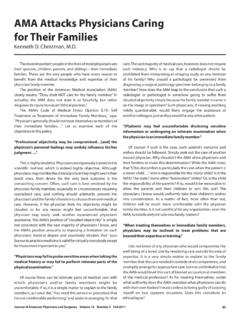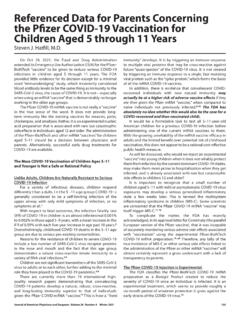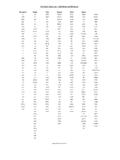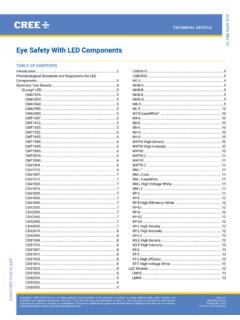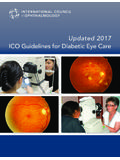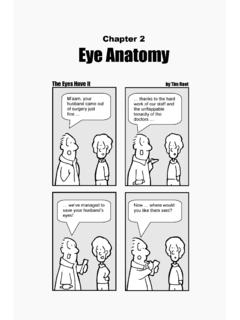Transcription of The Role of Third-Party Payers in Medical Cost …
1 ABSTRACTFrom the 1970s until the recession of 2008 2009, Medical expenses in the rose at a rate significantly faster than inflation. This is commonly believed to be the result of market imperfections. However, federal and state governments have long suppressed the functioning of the market system in the Medical industry. Third-Party payment, with its moral hazard, has increased demand and thereby driven up prices. Medical suppliers that work with relatively low levels of Third-Party payment have seen significantly lower price increases over time. The Patient Protection and Affordable Care Act (PPACA) has increased the usage of high-deductible insurance, but has other features that work against cost containment.
2 Increasing Demand through Third-Party PaymentIn order to function properly, insurance can only cover insurable risks. For a risk to meet this qualification, it must share three common characteristics: the chance of a loss is small; the magnitude of the loss is financially devastating to an individual; and when the risk is spread over a large group of people, premiums are affordable. For example, getting hit by a car is an insurable risk because the chance of such an occurrence is small; the required Medical services are too expensive for many individuals to afford; and when the risk is spread over a large group, the premiums are affordable.
3 Yet, many of the services covered by health insurance do not fit this definition, and instead involve predictable expenses or minor ,2 In fact, the Patient Protection and Affordable Care Act (PPACA) mandates coverage of immunizations, alcohol misuse screening and counseling, blood pressure screening, depression screening, diet counseling, obesity screening and counseling, tobacco use screening, anemia screening, breastfeeding comprehensive support and counseling, folic acid supplements, and iron supplements, among other preventive services. Some argue that Medical care needs to be treated differently from other market transactions because proper health is essential to life.
4 Yet food is essential to life, and grocery insurance does not exist nor should it. If this insurance did exist, consumers would become less sensitive to price increases. Grocery stores could then raise the prices of their products, and grocery insurance premiums would increase in order to account for the change in prices. That a good or service is necessary does not make it health insurance, other forms of insurance have not typically stepped outside of their proper role. For example, automobile insurance does not cover predictable or inexpensive services such as emissions testing or oil changes. The reason health insurance has been able to expand beyond its original market function is the extensive intervention of government.
5 Insurance for illness began around 1260 with the German Knappschaftverein. These were voluntary, charitable organizations that provided short- and long-term sickness insurance and pensions. 3, 4 Modern-form health insurance plans did not appear until 1850, when the Franklin Health Assurance Company of Massachusetts created the first form of health insurance in the United States in order to cover injuries related to railroad and steamboat However, despite growing popularity, few Americans owned health insurance until the mid-twentieth century; most Medical payments came directly from patients World War II, politicians inadvertently increased the number of insured individuals by enacting wage and price controls: employers, who could not offer higher wages to attract workers, offered benefits including health In 1943, the Supreme Court boosted demand for insurance further by ruling that employer-provided health insurance was exempt from taxation.
6 If employees were in a tax bracket of 20 percent, for example, and their employer offered them $10,000 each, then each employee would receive $8,000 after taxes. However, if employers offered them $10,000 each in health insurance benefits, then each employee would receive 100 percent of this benefit. Even if some employees did not make full use of the benefits available, the sizable taxes the employee would have to pay to receive the compensation as cash meant that there were advantages to obtaining insurance through an employer. The high federal income tax rates that prevailed from World War II until the Kennedy tax cuts reinforced the advantages of such nonmonetary addition, employer-provided health insurance takes advantage of risk-pooling effects.
7 Insurance companies selling to individuals who are independently seeking insurance face a significant adverse selection problem: those who are most likely to become ill are first in line for insurance, and unless the insurer can adequately screen for risk and structure premiums accordingly, the insurer will not be able to profitably sell insurance. The insurer can avoid this costly screening process by insuring groups assembled for some The Role of Third-Party Payersin Medical cost IncreasesMaureen J. Buff Timothy D. Terrell, of American Physicians and Surgeons Volume 19 Number 2 Summer 2014purpose other than to obtain health insurance. Since large companies represent attractive risk pools, the increasing fraction of the population employed by large companies in the first half of the 20th century probably contributed to the trend toward employer-provided health insurance.
8 Thus, employer-based health insurance proliferated. Thomasson observes that total enrollment in health insurance in the grew from 20,662,000 in 1940 to about 142,334,000 in Within two decades, this type of insurance covered more than 50 percent of the population. Through government mandates and union pressures, health insurance became extremely comprehensive, and by 2010, 83 percent of Americans owned some form of health and Moral HazardHealth insurance reduces price sensitivity because patients do not pay for Medical care at the point of service. third parties provide the bulk of Medical payments in the Insurance companies pay for these services using patients monthly premium payments or, in the case of government-funded health insurance, tax revenue.
9 This separation of consumption and payment makes people act as though they are receiving low- cost or even free services. A patient may opt for a procedure that costs taxpayers or insurance policy-holders $1,000 even though the value to the patient is only $200. Litigation aggravates the problem as patients and their attorneys seek large numbers of radiology procedures and other tests in an effort to locate one result to bolster a case. Some plaintiffs, for example, may obtain 5 to 10 MRI scans of the spine, which are unnecessary medically, but are demanded in the hope of obtaining an incidental finding that leads to a large settlement ( Huntoon, personal communication, 2014).
10 Additionally, because insured patients lack price sensitivity, physicians have little incentive to consider the full cost of services tendency to overconsume Medical care as others bear the cost is an example of moral hazard. More generally, moral hazard is a term used by economists to describe the tendency to take on more risk as the costs are shifted to others. In Medical care, the overall effect is to shift the demand curve for Medical services to the right, raising the equilibrium price. The level of distortion in the quantity of these services demanded varies with the price elasticity for each service. For example, a decline in out-of-pocket price due to insurance would be expected to have little effect on the number of heart surgeries purchased, but a large effect on the number of cosmetic surgeries.


